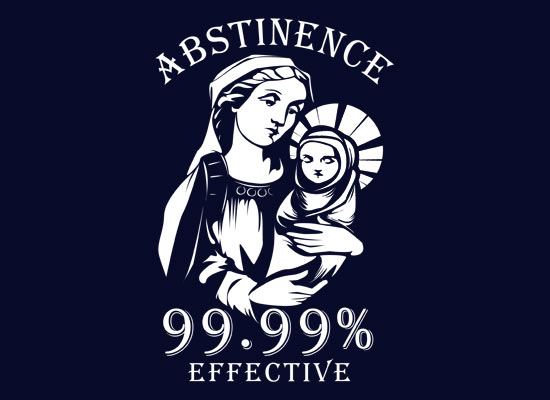
From http://www.snorgtees.com/t-shirts/abstinence-99-99-effective
Musings on biblical studies, politics, religion, ethics, human nature, tidbits from science


From http://www.snorgtees.com/t-shirts/abstinence-99-99-effective

The most important thing we need to know when reading any book is what kind of work it is. Is Luke’s Acts history or novel? If it is history, what sort of history? Above all, what did “history” mean to writers/readers in the Roman world of the first and second centuries CE?
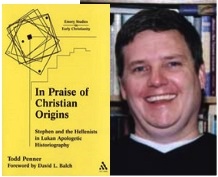 Todd Penner, Professor of Religious Studies at Austin University, has written a richly informative study of historiographical writing in antiquity as it is relevant to our appreciation of Acts, in particular to Luke’s account of Stephen and the Hellenists, Acts 6:1-8:3. This is the section most scholars of Christian origins consider historical at some level. Usually they suspect Luke was attempting to cover-up real events of unsavory divisions within the early church. Penner has a different perspective. Those little details that other scholars see as evidence of a cover-up Penner sees as quite coherent contributions toward Luke’s larger literary and theological narrative. But other scholars have generally not read Acts with any significant understanding of its literary character and have accordingly misread literary sails as archaeological trowels. Penner’s book is In Praise of Christian Origins:
Todd Penner, Professor of Religious Studies at Austin University, has written a richly informative study of historiographical writing in antiquity as it is relevant to our appreciation of Acts, in particular to Luke’s account of Stephen and the Hellenists, Acts 6:1-8:3. This is the section most scholars of Christian origins consider historical at some level. Usually they suspect Luke was attempting to cover-up real events of unsavory divisions within the early church. Penner has a different perspective. Those little details that other scholars see as evidence of a cover-up Penner sees as quite coherent contributions toward Luke’s larger literary and theological narrative. But other scholars have generally not read Acts with any significant understanding of its literary character and have accordingly misread literary sails as archaeological trowels. Penner’s book is In Praise of Christian Origins:
There is nothing in Acts 7 to suggest that there lies behind them anything but an adept ancient writer, someone extremely well-versed in Jewish traditions and styles of rewriting the biblical story.
The narrative portions of Acts 6:1-8:3 leave one with the same impression.
Could the narrative portions be historically accurate and true? Absolutely. Could they be completely fabricated? Absolutely. Could the truth rest somewhere in between? Absolutely.
The problem, of course, is that it is impossible to prove any of these premises.
Attempts by Hengel and others to intuit their way behind the stories aside, the unit is too tightly knit to allow one to go beyond what is given in the narrative itself. If the dominant view in Acts scholarship is that one can separate out the core historical events from the Lukan redaction, this study argues for the futility of such attempts. (In Praise of Christian Origins, pp. 331-332, my formatting)
Acts 6 opens with a problem in the church. Some of the widows are being neglected. Continue reading “Luke’s “Ahistorical” Widows, Hellenists and Deacons”

As if on cue — given some recent discussion and a significant point of my previous post . . . .
HT ICH . . . .

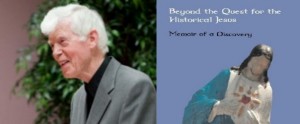 Continuing the series on Thomas Brodie’s Beyond the Quest for the Historical Jesus: Memoir of a Discovery, archived here. Continuing the series on Thomas Brodie’s Beyond the Quest for the Historical Jesus: Memoir of a Discovery, archived here.
This post addresses the next to last chapter. It gives Brodie’s answer to the question: What can a Christian still believe in if Jesus never existed but was entirely a literary-theological creation? |
In Thomas Brodie’s view Jesus was an imaginative literary creation of the New Testament writers. But that does not lessen his religious and spiritual significance for anyone who believes in and seeks to deepen their understanding of God. The Jesus figure was “not a petty literary exercise” but a vehicle for a new revelation or vision of the nature of God. Not just one but several people contributed their own inspirations to what this figure represented and that’s why we have diverse views of Jesus in the New Testament writings.
The name “Jesus” was the natural one given that it is the Greek form of the name of Moses’ successor, Joshua. He encapsulated a new understanding of God that succeeded the Mosaic revelation. He emulated and surpassed the old figures of Moses, Elijah, the Anointed One (Christ) and, being identified with the Yahweh of old, widened and deepened “for all time” the believer’s vision of the nature of God.
Brodie’s conceptualization of this vision of Jesus as “the heart of reality . . . the measure of reality; and . . . the enigmatic form of reality — shadowed beauty” surpasses my own naturalistic comprehension and view of reality so I can only leave it to those more mystically minded than I to read Brodie’s explanation for themselves. (Brodie himself says he does “not have a clear sense of what Jesus Christ means”, so I suspect I should not feel embarrassed for failing to understand some of his attempts to explain.) I think I can grasp some of the details, however.
Brodie might complain that I attempt to reduce the points to comprehensible brevity here and miss the “inexpressible” nature of what he wishes to express, but I will object to Brodie’s failure to comprehend the alternative vision of reality as found among the likes of naturalists like Dawkins (whom he appears either to have had no interest in reading for himself or to have misunderstood). I hope to give a reasonably fair idea of Brodie’s position here, however brief.
Christ died for our sins and rose to save us:
These words are beyond full comprehension (how does someone’s death actually redeem others from sins?) but they convey “a vision of reconciliation with fresh strength and clarity, so fresh that the revealing of the figure of Christ brings creation to a new level and inaugurates a new covenant. . . . It brings life to a new level.”
The idea of reconciliation with the divine is itself old. Contrast the Christ method with one of its earliest images, that of God “repenting” or “regretting” having wiped out all sinners in a great flood. Continue reading “Making of a (Christian) Mythicist, Act 5, Scene 3 (What Christianity Can Mean If Jesus Did Not Exist)”


Come writers and critics
who cauterize with your pen . . .
You’ve spoken too soon,
the wheel’s still in spin . . .
. . . Mythicism is compatible with Christian faith.
That is certainly the argument of Fr Thomas L. Brodie in chapter 20 of Beyond the Quest for the Historical Jesus: Memoir of a Discovery.
As Brodie was becoming increasingly aware of the extent of the debt the Gospels owed to the Old Testament narratives, his faith did not waver:
In September 1972, when I was first struck by the deep similarities between the Gospels and the Old Testament, I immediately had two responses: ‘This is strange stuff that may have radical implications’; and, ‘It’s OK’. Rightly or wrongly, my sense of God’s presence at the time reassured me that whatever was happening would be alright (sic). (p. 197)
It was within two years that Brodie finally saw the way 1 Corinthians had synthesized various sources in order to “[compose] the very figure of Christ and [lay] that figure down as a foundation for others” and it was only then that the foundations of his belief-system were fully impacted.
Still it seemed that, in some way I did not understand, things would be OK. God was still God, and eventually things would work out, they would become clear. However, while I kept trying, as usual, to be faithful to the practices of the Catholic faith, I often wondered what that faith really meant. (p. 198)
Some time in the 1980s as Brodie was continuing to ponder what he truly believed he concluded that he “was really sure of the Abraham story, not of its history, but of its meaning.” It turned out that this belief in the meaning (as opposed to the literal history) of a biblical narrative would point the way forward to a Christian faith without a literal, historical Jesus.

Brodie calls upon imagination and mysticism. I am reminded of John Shelby Spong’s Liberating the Gospels. By the time I finish reading the main text I am wondering why Spong believes in Jesus at all. Then I read the epilogue only to find he speaks of being “overwhelmed” by his “God consciousness” and the “mystical presence” of God. He calls for a new way of looking at Christianity, a non-literal way of reading the Gospels. (Spong emphatically does believe there was a historical Jesus who was crucified, however.)
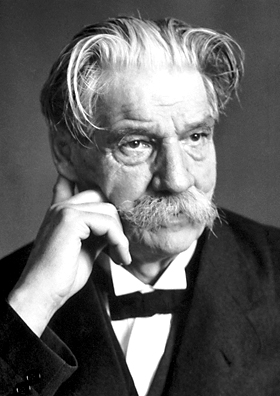
I am also reminded of Albert Schweitzer’s conclusion in The Quest of the Historical Jesus (pp. 401-402, my bolding):
[S]trictly speaking absolutely nothing can be proved by evidence from the past, but can only be shown to be more or less probable. Moreover, in the case of Jesus, the theoretical reservations are even greater because all the reports about him go back to the one source of tradition, early Christianity itself, and there are no data available in Jewish or Gentile secular history which could be used as controls. Thus the degree of certainty cannot even by raised so high as positive probability.
. . . . Seen from a purely logical viewpoint, whether Jesus existed or did not exist must always remain hypothetical. . . .
. . . Modern Christianity must always reckon with the possibility of having to abandon the historical figure of Jesus. Hence it must not artificially increase his importance by referring all theological knowledge to him and developing a ‘christocentric’ religion: the Lord may always be a mere element in ‘religion’, but he should never be considered its foundation.
To put it differently: religion must avail itself of a metaphysic, that is, a basic view of the nature and significance of being which is entirely independent of history and of knowledge transmitted from the past . . .
Schweitzer, of course, did believe there was such a historical figure and he argued against Christ-myth theorists of his day. That’s what makes the above passage all the more significant. He seems to be approving of a view of Christianity that transcends faith in literal interpretations and historical events. (Please Stephanie F., do not come back here with your undergrad essays on some tangential argument about another and quite unrelated aspect of Schweitzer’s faith.)
By “imagination and mysticism” Brodie means Continue reading “Making of a (Christian) Mythicist, Act 5, Scene 2 (Staying Christian With a Symbolic Jesus)”

* Removing the miraculous from a story does not bring us closer to history; it only destroys the point of the story.
* Two-step miraculous healing of the blind (e.g. spit on the eyes followed by touching them, Mark 8:23-25) are evidently symbolic of the double-efforts to open the (spiritual) eyes of the disciples.
I have posted on miracles and what the scholarly literature has to say about them before.* This time I take a different tack.
In my recent post, Jesus Is Not “As Historical As Anyone Else in the Ancient World”, we saw that the “type of discourse” and “language categories” of the Gospels group them with fantasy literature and separate them from the sources we rely upon to identify historical persons and events.
This post continues that theme but compares the place of miracles in the Gospels and other ancient literature.
Before we begin let me address common objections.
Yes, we all know the Gospels include many accurate historical and geographical features. (They also contain errors and anachronisms.) But references to real persons and places no more makes ancient narratives “historical” than it makes James Bond movies historical or ancient/modern historical fiction “historical”. See, for example, Ancient Novels Like the Gospels: Mixing History and Myth and History and Verisimilitude: “Real” vs. “Realistic”.
And yes, we all know that miraculous events are found in ancient works that we classify as historical. But there is a clear difference in the way miracles are narrated in works by ancient historians and what we read in various gospels, both uncanonical and canonical. These differences return us to the theme of the previous post, the difference in verbal categories that identify different types of discourse. In historiographical works (at least in all cases I can recall) the discourse conveys an author’s self-conscious apologetic to justify their inclusion in the book. The reason for this is that the historian understands and accepts and writes within the conceptual framework of an “empirically stable reality”. If miracles are introduced the author must explain in some way why he mentions them or how he justifies their appearance in a work that is otherwise about “the real world”. (They were reported by so-and-so; I would not repeat this except that. . . ., etc.) But now we are sequeing into the theme of this post.
So how do historical Jesus scholars justify their reliance upon works that are evidently theological tracts riddled with miraculous events? Continue reading “The Arbitrary Approach to Miracle Stories In “Historical Jesus” Scholarship”

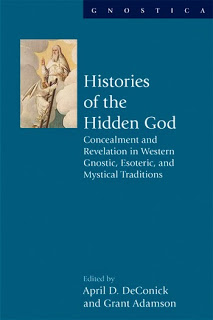 April DeConick has written an interesting article, Who is Hiding in the Gospel of John? Reconceptualizing Johannine Theology and the Roots of Gnosticism (published as a chapter in Histories of the Hidden God) that coincidentally ties in remarkably well with the view of Roger Parvus (posted in part here) that the Gospel of John is an orthodox redaction of the Gospel of an apostate from Marcionism, Apelles. Not that DeConick argues Parvus’s thesis. In fact she has a different explanation for the evidence she reads in the Gospel. But I think readers of Roger Parvus’s posts here may well think the doctrines April identifies in the Gospel do indeed match the teachings of Apelles the ex-Marcionite .
April DeConick has written an interesting article, Who is Hiding in the Gospel of John? Reconceptualizing Johannine Theology and the Roots of Gnosticism (published as a chapter in Histories of the Hidden God) that coincidentally ties in remarkably well with the view of Roger Parvus (posted in part here) that the Gospel of John is an orthodox redaction of the Gospel of an apostate from Marcionism, Apelles. Not that DeConick argues Parvus’s thesis. In fact she has a different explanation for the evidence she reads in the Gospel. But I think readers of Roger Parvus’s posts here may well think the doctrines April identifies in the Gospel do indeed match the teachings of Apelles the ex-Marcionite .
The passage that sparked April DeConick’s particular interest in the Gospel of John was the Greek working in 8:44
ὑμεῖς ἐκ τοῦ πατρὸς τοῦ διαβόλου ἐστὲ
you of the father the devil are
DeConick explains (my bolding):
With the article preceding πατρός, the phrase του διαβόλου is a genitive phrase modifying the nominal phrase έκ του πατρός.. Thus: “You are from the father of the Devil.” If the statement were to mean, as the standard English translation renders it, “You are of the father, the Devil,” then ‘the article preceding πατρός would not be present.
Look at the complete verse as it is normally translated into English:
Ye are of your father the devil, and the lusts of your father ye will do. He was a murderer from the beginning, and abode not in the truth, because there is no truth in him. When he speaketh a lie, he speaketh of his own: for he is a liar, and the father of it. (KJV)
“Father of it” does sound a wee awkward. Notice how Youngs Literal Translation treats that last phrase:
. . . . because he is a liar — also his father.
And that’s what April DeConick also points out is the “literal reading of John 8:44f
. . . . because he is a liar and so is his father.
So John 8:44 speaks the father of the Devil. Continue reading “The Devil’s Father and Gnostic Hints In the Gospel of John”

In a comment to Neil’s post, Discovering the Sources for the First Gospel, 3 — Criteria, from way back in May of 2012, I introduced a way to explain how the Fourth Evangelist may have used the Gospel of Mark. It might not be a novel approach — there is no new thing under the sun — and I certainly don’t have access to all the commentaries and exegeses on John. However, it’s new to me.
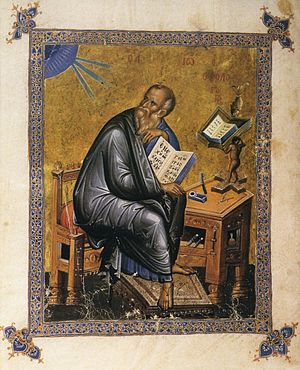
For simplicity’s sake, here’s my comment, with some minor edits:
In Mark 15:37, Jesus “breathes his last.” In the following verse the temple curtain is torn from top to bottom. And in verse 39, the centurion declares him to be the Son of God.
Key words to notice in verse 15:36 are (1) ἐσχίσθη (eschisthē) — “was torn” and (2) ἄνωθεν (anōthen) — “from [the] top.” A close, literal translation of the verse might be: “And the veil of the temple was torn in two from the top to the bottom.”
In John, conversely, at the beginning of the crucifixion (19:23) the soldiers take Jesus’ belongings and split them among themselves. They divide his garments into four equal piles, but they notice that Jesus’ tunic is formed of a single piece of woven fabric without seams. John says that the tunic was “seamless from the top (anōthen), woven throughout all.” And in the next verse, they decide not to tear (σχίσωμεν (schisōmen)) the tunic, but cast lots for it instead. It was not torn.
The garment John describes has reminded several commentators of the priestly vestment described by Josephus: “Now this vesture was not composed of two pieces, nor was it sewed together upon the shoulders and the sides, but it was one long vestment so woven as to have an aperture for the neck; not an oblique one, but parted all along the breast and the back.” (http://www.ccel.org/j/josephus/works/ant-3.htm)
Continue reading “How John Used Mark: Investigating the Methods of the Fourth Evangelist (Part 1)”


Only a day after posting the John Meier’s Nixon/Thales fallacy, as if right on cue Larry Hurtado has posted his own version of a similar fallacy, a comparison of the evidence for Buddha with that for Jesus.
Recall the Nixon/Thales comparison fallacy:
When John Meier in his opening chapter of volume one of The Marginal Jew discusses the “basic concept” of “The Real Jesus and the Historical Jesus” he creates the illusion of starting at the beginning but in fact he leaves the entire question of historicity begging.
Owens identifies what Meier has done in making such comparisons (my bolding in all quotations):
An implication exists in the double comparison, which is that Jesus is as real as Nixon and as historical as Thales but the explicit point is that there is less ‘reality’ data on Jesus than on Nixon, and as meager ‘historical’ data on Jesus as on Thales.
We note that what we might consider the “first question” of any book purporting to deal with the issue of a ‘historical Jesus’ – the question of whether or not Jesus existed — is being set up to go begging. ‘Reality’ is impossible, and ‘history’ is impossibly difficult, so we are to assume both, as we do with Nixon and Thales.
(Owens, Clarke W. (2013-07-26). Son of Yahweh: The Gospels As Novels (Kindle Locations 216-221). Christian Alternative. Kindle Edition.)
See how Larry Hurtado has fallen into the same implicit fallacy with his Buddha comparison: Continue reading “The Buddha Comparison Fallacy in HJ Studies”

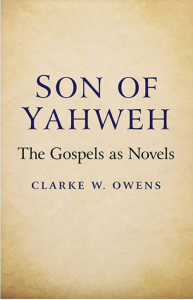 One of the gold nuggets in Clarke Owens’ Son of Yahweh: The Gospels as Novels is its simple explanation of how how to distinguish between historical persons (e.g. Socrates, Thales, Alexander, etc) and fictive ones like (as we shall see) Jesus. I say it’s a “simple explanation” but maybe that’s because I am biased towards the idea of studying how literature works and the importance of understanding the nature of a literary source before we can know how to interpret its story.
One of the gold nuggets in Clarke Owens’ Son of Yahweh: The Gospels as Novels is its simple explanation of how how to distinguish between historical persons (e.g. Socrates, Thales, Alexander, etc) and fictive ones like (as we shall see) Jesus. I say it’s a “simple explanation” but maybe that’s because I am biased towards the idea of studying how literature works and the importance of understanding the nature of a literary source before we can know how to interpret its story.
I can already hear the groans of people thinking, “But we all know the Gospel Jesus is not the historical Jesus; we all know the Christ of the Faith is not the historical person,” and so forth, so what’s the point? Answer: In a future post we shall see that the very idea that the Gospels can even be used as sources through which theologians can dig to find history beneath them — an archaeological image often used by HJ scholars — is a fallacy.
Let’s return again to John P. Meier. (We’ve spotlighted him a lot lately, and not only with these Owens posts. The price of scholarly renown!)
In The Marginal Jew, v. 1, page 12, Owens focuses on Meier’s bald assertion that literary criticism is of no use to scholars who are seeking to discern genuinely historical material behind the Gospels. (I have argued that that is nonsense but in this post I will try to channel Owen’s voice as much as possible.) And what are Meier’s grounds for giving a priori confidence in the Gospels as gateways to historical information lurking behind the texts?
1st-century documents of Christian propaganda . . . advanced truth claims about Jesus of Nazareth, truth claims for which some 1st-century Christians were willing to die. . . .
Is not this a scholarly version, a slightly diluted version, of: “The Bible claims to be the Word of God and since the first generations of Christians willingly died for its message it must be true! No-one would die for a lie!” Scholar’s edition: “The Bible claims. . . . and since Christians died. . . . there must be some truth somewhere there if we look with the proper tools.” Both the conservative believer and the critical scholar in the service of increasing the credibility of theology to the modern world rhetorically conclude: How else do we explain the martyrdoms? How else do we explain Christianity?
When John Meier in his opening chapter of volume one discusses the “basic concept” of “The Real Jesus and the Historical Jesus” he creates the illusion of starting at the beginning but in fact he leaves the entire question of historicity begging.
Owens identifies what Meier has done in making such comparisons (my bolding in all quotations):
An implication exists in the double comparison, which is that Jesus is as real as Nixon and as historical as Thales but the explicit point is that there is less ‘reality’ data on Jesus than on Nixon, and as meager ‘historical’ data on Jesus as on Thales.
We note that what we might consider the “first question” of any book purporting to deal with the issue of a ‘historical Jesus’ – the question of whether or not Jesus existed — is being set up to go begging. ‘Reality’ is impossible, and ‘history’ is impossibly difficult, so we are to assume both, as we do with Nixon and Thales.
(Owens, Clarke W. (2013-07-26). Son of Yahweh: The Gospels As Novels (Kindle Locations 216-221). Christian Alternative. Kindle Edition.)
No. And the reason the answer is No is because the qualitative difference between the literary evidence for the existence of Thales and the literary evidence for the existence of Jesus. (John Meier introduced the comparison of Thales so Clarke Owens takes this as a case-study to illustrate his argument.) Continue reading “Jesus Is Not “As Historical As Anyone Else in the Ancient World””

.
| The following is an article by Jonathan Cook, copied here with permission, from Information Clearing House. |
.

By Jonathan Cook
What I am going to write here will doubtless make me unpopular with some readers, even if only because they will assume that what follows about Nelson Mandela is disrespectful. It is not.
So let me start by recognising Mandela’s huge achievement in helping to bring down South African apartheid, and make clear my enormous respect for the great personal sacrifices he made, including spending so many years caged up for his part in the struggle to liberate his people. These are things impossible to forget or ignore when assessing someone’s life.
Nonetheless it is important to pause during the general acclamation of his legacy, mostly by people who have never demonstrated a fraction of his integrity, to consider a lesson that most observers want to overlook.
Perhaps the best way to make my point is to highlight a mock memo written in 2001 by Arjan el-Fassed, from Nelson Mandela to the NYT’s columnist Thomas Friedman. It is a wonderful, humane denunciation of Friedman’s hypocrisy and a demand for justice for the Palestinians that Mandela should have written.
Soon afterwards, the memo spread online, stripped of el-Fassed’s closing byline. Many people, including a few senior journalists, assumed it was written by Mandela and published it as such. It seemed they wanted to believe that Mandela had written something as morally clear-sighted as this about another apartheid system, one at least the equal of that imposed for decades on black South Africans.
However, the reality is that it was not written by Mandela, and his staff even went so far as to threaten legal action against the author.
Mandela spent most his adult life treated as a “terrorist”. There was a price to be paid for his long walk to freedom, and the end of South Africa’s system of racial apartheid. Mandela was rehabilitated into an “elder statesman” in return for South Africa being rapidly transformed into an outpost of neoliberalism, prioritising the kind of economic apartheid most of us in the west are getting a strong dose of now.
In my view, Mandela suffered a double tragedy in his post-prison years. Continue reading “A Dissenting Opinion on Nelson Mandela”

In October I posted So this was “Kick Joe Atwill Week”. I have my own reasons for not accepting Joe Atwill’s thesis or methods of argument but I was shocked to see the way scholars and aspiring scholars who otherwise pride themselves on epitomizing what we should expect of gentlemen and scholars resorting to dirty personal abuse — all with the apparent motive of wanting to distance their own personal reputations (or the reputation of their profession) from what they called “crankery” and excrement. They evidently had no confidence in their trained powers of reason to be sufficient to sway their presumably dim-witted blog-readers.
Since then I have been informed that Joe Atwill and another have responded to Richard Carrier’s criticism of Atwill. Interested readers can find them at:
As time and other priorities allow I may in the future post my own criticism of Atwill’s arguments. Till then, we all have the opportunity to study the arguments, evidence and methods of both sides for ourselves.

As a follow up to my last post I am sharing here another valuable snippet I read in Clarke Owens’ Son of Yahweh: The Gospels as Novels.
Owens’ first chapter, “Literary Criticism and the Historical Jesus”, is brilliant and deserves to be read and addressed by everyone who has an interest in how scholars work on the “quest” for the historical Jesus. My reasons for that evaluation:
And for those rabid anti-mythicists who assume that anyone who questions the historicity of Jesus is a raving lunatic with a hostile vendetta against God and Christianity, well, they’ll be disappointed to learn that Clarke Owens writes with sensitivity towards those whose cherished beliefs are challenged in his book.

As Owens point out,
to go on a quest for something means that we seek it; we hope to find it; it is our most cherished goal, like the quest for the Holy Grail.
A quest is an entirely different kind of undertaking from
one in which we seek to ascertain whether or not materials exist which would support a finding that Jesus had an historical existence . . .
That is, a quest assumes that there is an historical Jesus to be found, and the reason for this is, ultimately, theological belief. A truly historical inquiry would, on the other hand,
require that we first examine the materials before we determine the nature of the quest [i.e. whether the materials indicate there is an historical Jesus or some other Jesus or agent to be sought]
Prominent HJ scholar John P. Meier himself said so. In his chapter 7 of volume one of A Marginal Jew, “Why Bother? The Relevance of the Quest for the Historical Jesus”, Meier answered this question this way: Continue reading “The Historical Jesus Quest Is Theology in Disguise”

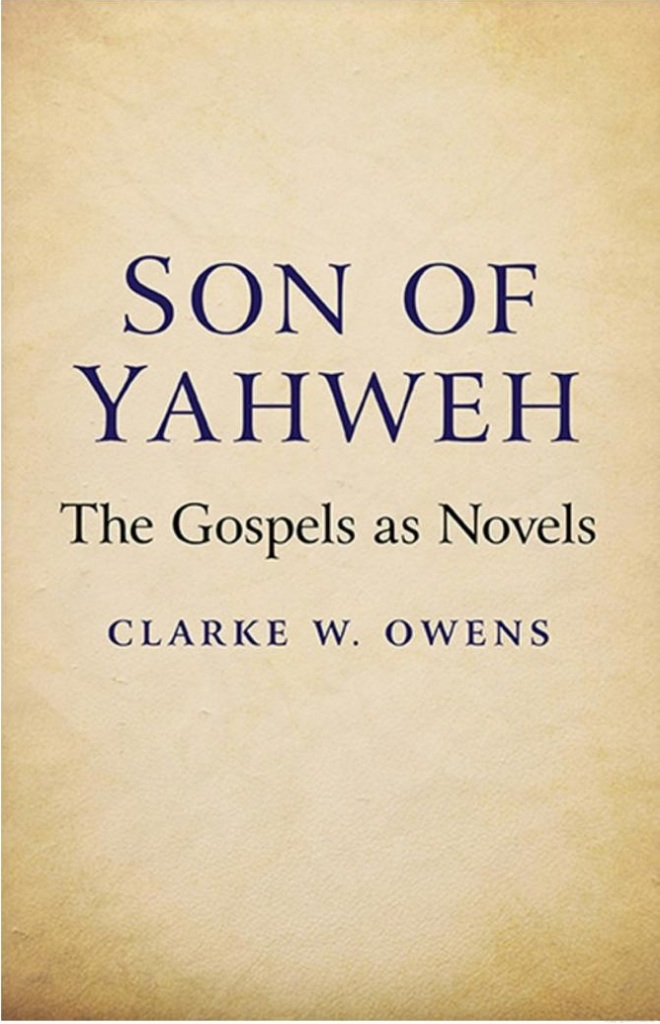 A blog reader has alerted me to a book by Clarke W. Owens, Son of Yahweh: The Gospels as Novels, that I have found contains some very worthwhile nuggets for anyone interested in understanding the nature of the Gospels as either literature or historical documents.
A blog reader has alerted me to a book by Clarke W. Owens, Son of Yahweh: The Gospels as Novels, that I have found contains some very worthwhile nuggets for anyone interested in understanding the nature of the Gospels as either literature or historical documents.
The Amazon page says Clarke Owens has “three degrees in English and a law degree”. Ever since the appearance of lawyer Frank Morrison’s Who Moved the Stone I would have thought a law degree in biblical studies would have been a liability when it came to the credibility stakes, but I am impressed with anyone who has three degrees in English. (A website says one of them is a doctorate.) Such a person ought to understand how literature works, whatever the language. So I purchased the Kindle version and have up till now read a third of the work. I have liked most of what I have read so far and I’ll tell you why.
And these notes are only from the Introduction! So I am hoping for even more rewards as I read further.
But first, the motive. . .
I do not advance this idea with the purpose of antagonizing the devout, but out of a genuine and long-standing interest in the nature of the Bible as a literary artifact. (Owens, Clarke W. (2013-07-26). Son of Yahweh: The Gospels As Novels (Kindle Locations 149-150). Christian Alternative. Kindle Edition.)
My motive is the same. I am not the least interested in attacking anyone or the sincerity or the devout faith of anyone. This post is made public for the interest of likeminded people who wish to discuss the matter critically and to deepen our understanding of the nature of the Bible.
Fantastic details are the most obvious indicator that we are reading fiction. Clarke reminds us that even many Christian believers consider the virgin birth (a narrative created in an effort to fulfill a supposed prophecy in the Greek version of Isaiah 7:14) to be pious fiction.
Of course biblical historians are quick to defend the Gospels by asserting that they are no different from other ancient historical works in that accounts of miracles are found in both. This is a point Clarke addresses in his next chapter. For now, however, I would point out that the Gospels are very different types of literature from historical writings of the day, and the way miracles are presented in surviving Greek, Roman and Jewish historical writings bears little comparison with the way they are presented in the Gospels.
When theologians and historians of the New Testament say otherwise — as they often do — I think they are demonstrating either their ignorance or their disingenuousness. I will discuss this in more detail when I come to Clarke’s next chapter.
In a future post we will look at Clarke Owens’ closer comparison of the Gospels with the writings historians rely upon to conclude the historical existence of other ancient persons and see exactly how different the two types of literature are — a chorus of a thousand theologians notwithstanding.